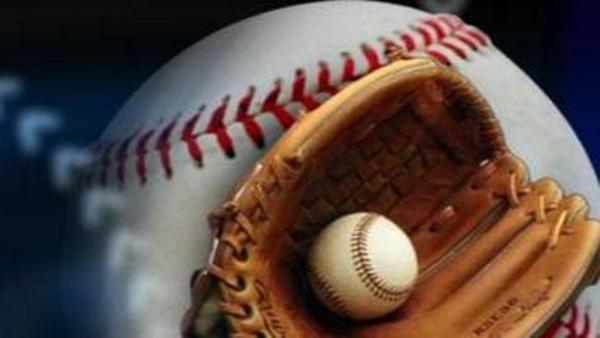SECAUCUS, N.J. (AP) — Jim Abbott vividly remembers sitting nervously at home in Flint, Michigan, the tension broken only by one life-changing phone call.
On the other side of the line were the Angels, announcing to the left-handed pitcher that they had selected him with the eighth overall pick in the 1988 baseball draft.
“It’s like Christmas Day, times 100,” a smiling Abbott recalled Thursday night. “You know Santa Claus is coming, but you’re not sure when he’s coming.”
Abbott was one of several former major leaguers in attendance serving as team representatives at MLB Network studios, the site of this year’s Major League Baseball draft.
“I knew the Angels were interested in drafting me, but the anticipation and, ultimately, the confirmation, were endless,” said Abbott, who pitched for four teams over 10 seasons and threw a no-hitter for the Yankees in 1993 despite being born without a right hand. “And then, it happens and you’re just so happy and it feels like the end of your prep career and the beginning of a whole new chapter. The Angels seemed so far away and so foreign from where I grew up in Michigan.
“It was phenomenal.”
The draft has become a prime-time event, with Commissioner Rob Manfred announcing the names of each first-rounder in front of a live studio audience that includes many big leaguers whose draft-day experiences consisted of only a phone call or listening on the internet.
Major League Baseball conducted its draft, which started in 1965, primarily by conference call with each of its teams until 2007, when it was televised for the first time. It still might not be the spectacle the NFL or NBA drafts are, but media exposure has increased in the last few years. And the players who see it now wish they had gotten a chance to shake hands with the commissioner and slip on their new team’s cap and jersey.
“It makes me realize that I got screwed,” said a laughing Ben Sheets, the No. 10 overall pick by Milwaukee in 1999. “I mean, it definitely wasn’t this nice. This is a nice setup they’ve got going here. It’s a nice idea, and it’s a big moment for a couple of kids who are here.”
Two prospects were in attendance Thursday night: upstate New York pitcher Ian Anderson, taken third overall by Atlanta, and Georgia high school outfielder Will Benson, who went 14th to Cleveland. While the draft isn’t as heavily attended by would-be picks, in large part because the college season is still going on, it’s a much bigger production then it once was.
Harold Baines was the No. 1 overall pick in 1977 by the Chicago White Sox, and he recalled owner Bill Veeck and general manager Roland Hemond coming to his home in Maryland to sign him.
“I didn’t get a phone call, but the night before (the draft), they told me they thought they might take me No. 1,” the six-time All-Star recalled. “I was naive back then and I didn’t have an agent or anything like that. They told me to find a lawyer for tomorrow, and I found a lawyer and we signed a contract the next day.”
Signability plays a large role in where players are drafted. Some teams will bypass top-ranked players in order to draft someone they deem to be easy signees. Teams get a feel for whether they’ll be able to sign certain players in the weeks and days leading up to the draft.
“Teams were asking, ‘Would you sign for this? Would you sign for that?'” recalled former pitcher Jeff Francis, drafted ninth overall by Colorado in 2002. “Having said yes to all of those questions, I had an idea, so I knew when to listen (on the internet). When I heard my name called, there was some celebration and some tears on the part of my parents.”
B.J. Surhoff, the No. 1 overall pick by Milwaukee in 1985, was at the draft last year and was impressed then by how different the experience is for players now.
“I was 99.99 percent sure that I was going where I was going,” he said. “There was none of this, though. There was no cellphone, no internet, obviously. It was really a very uneventful day. It was more worried about moving on and getting started.”
Sheets remembered having no idea what team would draft him out of Northeast Louisiana University, now called Louisiana-Monroe. The right-hander was considered one of the best college arms in the draft in 1999, and he ended up winning 94 games and was a four-time All-Star.
“It was streaming live on the computer, like the audio,” Sheets said. “I kind of didn’t expect where I went, but it was obviously a blessing for me to even get drafted.”
This year’s draft continued with rounds 3-10 on Friday and finishes Saturday with rounds 11-50 — all via conference calls and streamed online, like the “old days.” California high school outfielder Mickey Moniak was this year’s No. 1 pick by Philadelphia on Thursday night.
“It’s such a special day for these guys,” Baines said. “Especially for their families, who put in a lot of work taking them to Little League and Pony League. And now, they’re fortunate enough, hopefully, to see their sons get drafted.”
Copyright 2024 The Associated Press. All rights reserved. This material may not be published, broadcast, rewritten or redistributed.

